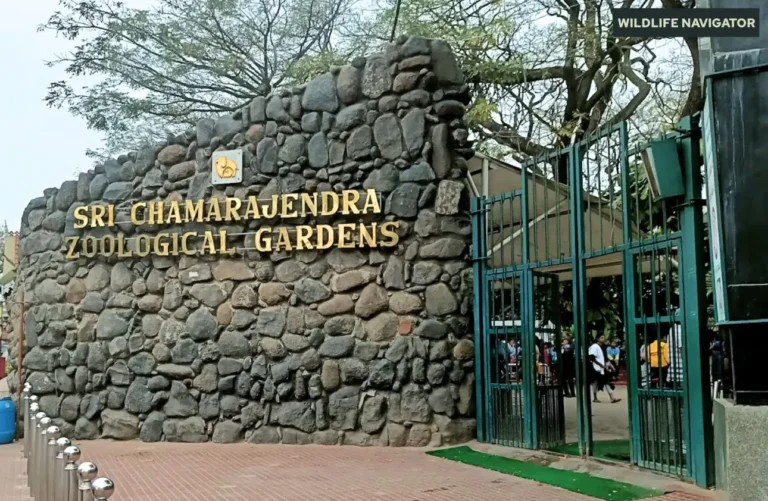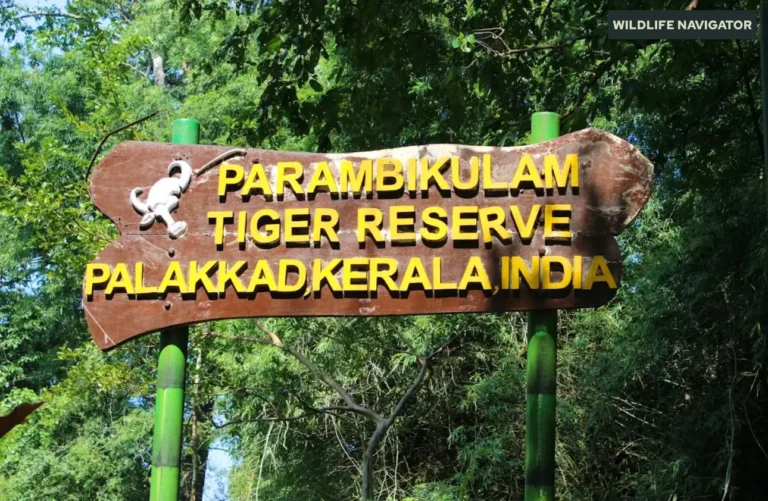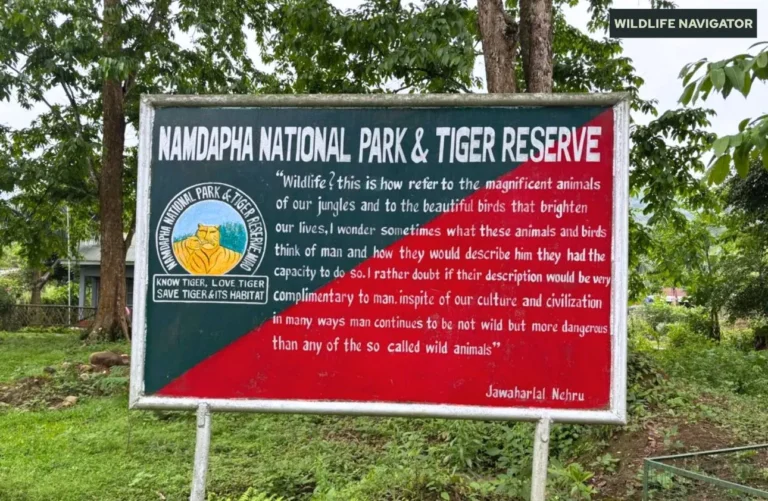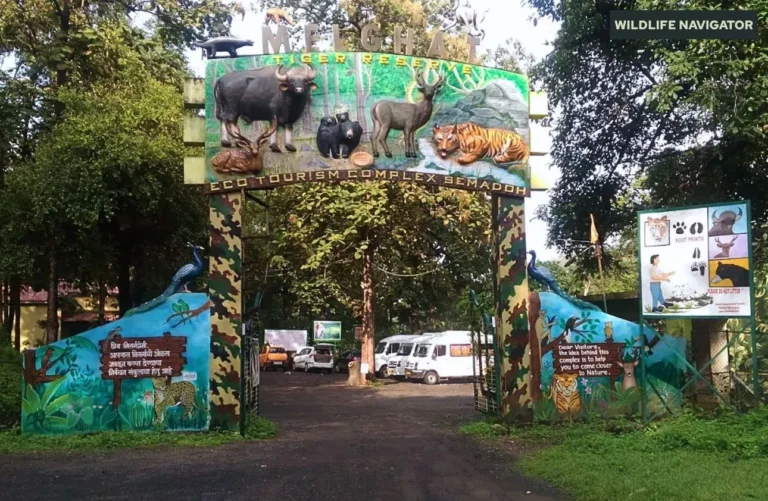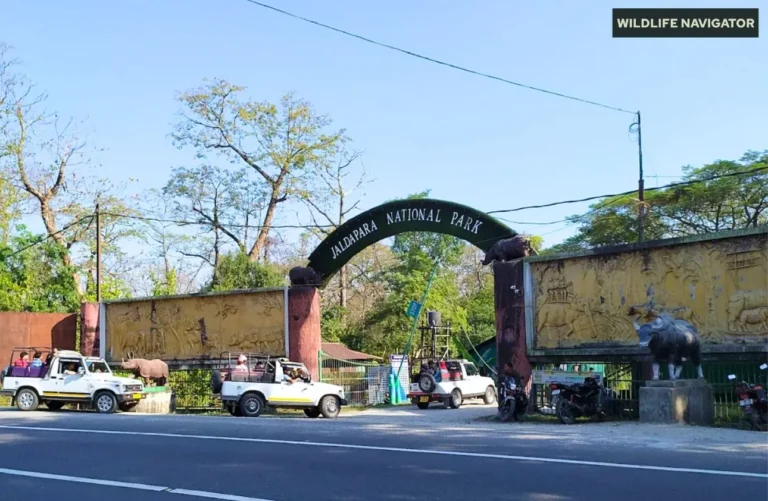Nandankanan Zoological Park, Bhubaneswar | History, Timings, Safari & Travel Guide

Nandankanan Zoological Park is one of India’s most celebrated zoological gardens, located on the outskirts of Bhubaneswar, the capital city of Odisha. Unlike conventional zoos that often feel artificial, Nandankanan offers a natural forest-like environment, spread across lush greenery, serene lakes, and a botanical garden setting.
The name “Nandankanan” translates to “The Garden of the Gods”, which perfectly captures its charm. Opened to the public in 1979, this park has since grown into a major attraction for wildlife lovers, families, students, and researchers alike.
What truly sets Nandankanan apart is its global recognition as the first zoo in the world to breed white tigers in captivity. It is also one of the few zoological parks that house a successful Gharial (fish-eating crocodile) breeding centre, making it a vital hub for wildlife conservation and education.
Today, Nandankanan is not just a zoo but a conservation park that blends animal protection, research, and tourism. With over 150 species of animals, birds, and reptiles, the park attracts millions of visitors each year who come to witness its safaris, reptile park, orchid gardens, and tranquil Kanjia Lake.
For travellers exploring Odisha, a visit to Nandankanan Zoological Park is more than just sightseeing—it’s an immersive experience that combines adventure, learning, and a deeper appreciation for nature.
History, Geography and Layout of Nandankanan Zoological Park
History and Establishment
Nandankanan Zoological Park has a rich history that reflects Odisha’s commitment to wildlife conservation. The idea of establishing a zoological garden in Bhubaneswar was conceived in the late 1950s, when the state recognised the need for a large, natural space to showcase and protect its diverse flora and fauna.
- Foundation Year: The park was officially established in 1960, but it was opened to the public in 1979.
- Meaning of the Name: “Nandankanan,” meaning Garden of the Gods, was inspired by its enchanting natural setting filled with dense forests, water bodies, and a wide range of wildlife.
- Milestones:
- In 1980, Nandankanan made international headlines for successfully breeding white tigers in captivity—the first zoo in the world to achieve this feat.
- Over the years, it has grown into a recognised conservation and breeding centre for endangered species such as gharials, pangolins, and Indian rock pythons.
- Recognition: Today, it holds the distinction of being the first zoo in India to join the World Association of Zoos and Aquariums (WAZA), which highlights its global importance.
Geography and Natural Setting
One of the biggest strengths of Nandankanan is its unique natural layout. Unlike many zoos built on artificial enclosures, Nandankanan is set amidst the Chandaka Forest and is integrated with a large natural water body, Kanjia Lake.
- Area Covered: The zoo and its botanical garden together spread across 437 hectares, out of which around 350 hectares are dedicated to the zoological park and 67 hectares to the botanical garden.
- Landscape: The park consists of moist deciduous forests, grasslands, wetlands, and rocky patches, offering diverse habitats for animals.
- Kanjia Lake: A 134-acre freshwater lake, located within the park premises, is home to migratory birds, freshwater fish, and aquatic plants. It also provides boating opportunities for visitors.
- Design Philosophy: Instead of confining animals in tight cages, Nandankanan emphasises open enclosures and safari-style areas, making it one of the few zoos in India where animals live in a more natural and spacious habitat.
Wildlife Attractions and Star Species of Nandankanan
Nandankanan Zoological Park is home to an extraordinary variety of animals, birds, and reptiles, making it one of the richest wildlife destinations in India. With over 150 species and thousands of individual creatures, the park is especially famous for its white tigers, lion safari, and rare reptile collection.
Here are the key wildlife highlights you can witness at the park:
Mammals
- White Tigers – The crown jewel of Nandankanan, these majestic tigers are the result of a successful captive breeding program started in 1980. Their striking white coat with black stripes makes them the most sought-after attraction.
- Royal Bengal Tigers – Alongside the white variety, the park houses several Bengal tigers in naturalistic enclosures and safari areas.
- Asiatic Lions – One of the rarest big cats in the world, they can be seen up close in the Lion Safari.
- Leopards & Black Panthers – The park shelters Indian leopards and occasionally black panthers, offering visitors a chance to witness elusive predators.
- Sloth Bears – Known for their shaggy coat and long snout, these bears are playful yet powerful.
- Herbivores – Spotted deer, barking deer, nilgai (blue bull), sambar deer, and gaur (Indian bison) roam in their respective sections.
Birds
Nandankanan doubles as a paradise for bird watchers, with both resident and migratory species thriving in the park’s wetlands and aviaries.
- Peafowl – The Indian national bird, with its vibrant plumage, is found in large numbers.
- Parakeets & Hornbills – Colourful and exotic species that add charm to the aviary.
- Water Birds – Pelicans, storks, herons, and ibises are commonly seen around Kanjia Lake.
- Migratory Birds – During winter, the lake becomes a temporary home to migratory ducks and geese, offering a spectacular sight.
- Bird Aviary – One of India’s largest aviaries, allowing visitors to walk through and observe exotic bird species.
Reptiles
The Reptile Park at Nandankanan is a major crowd-puller, featuring a fascinating collection of cold-blooded species.
- Gharials – Nandankanan is among the very few places in the world where gharials are successfully bred in captivity.
- Crocodiles & Alligators – Large pools house mugger crocodiles and alligators.
- Snakes – From king cobras to Indian rock pythons and vipers, the snake enclosures are thrilling for reptile enthusiasts.
- Turtles & Tortoises – Various species, including the Indian star tortoise, are also showcased.
Aquarium & Other Species
- The freshwater aquarium displays indigenous fish species, educating visitors about aquatic biodiversity.
- Amphibians like frogs and toads are also conserved in natural enclosures.
- Smaller mammals such as porcupines, monkeys, and jackals can also be spotted during a zoo visit.
Special Features of Nandankanan Zoological Park
Nandankanan Zoological Park is not just about walking around enclosures—it offers unique experiences and attractions that bring visitors closer to wildlife in exciting and educational ways. These special features make it one of the most interactive and adventurous zoos in India.
White Tiger Safari
One of the most thrilling experiences in Nandankanan is the White Tiger Safari, where visitors ride in caged vehicles through a large open forest area. Unlike traditional zoo exhibits, here the tigers roam freely in a natural habitat, and visitors get a chance to spot the majestic white tigers up close, often walking right past the safari bus.
Lion Safari
The Lion Safari is another highlight, allowing visitors to encounter the Asiatic Lion, a species found only in the Gir Forest of Gujarat apart from this park. Observing these powerful cats in a semi-natural setting gives an adrenaline rush and a deeper appreciation for their conservation importance.
Reptile Park
The dedicated Reptile Park houses a fascinating range of species, including gharials, crocodiles, turtles, and snakes. Designed with educational displays, it helps visitors understand reptilian diversity, behaviour, and the role these species play in ecosystems.
Aquarium
The aquarium section showcases both freshwater and marine fish species. It serves as an educational hub, especially for children, to learn about aquatic life and the importance of conserving water ecosystems.
Botanical Garden
Adjoining the zoological park is a lush botanical garden, spread over 67 hectares, featuring orchids, cactus houses, medicinal plants, and ornamental gardens. It complements the zoo by showcasing plant diversity and their ecological importance.
Nocturnal Animal House
A rare attraction in Indian zoos, the Nocturnal Animal House is designed to reverse the day-night cycle for animals like owls, civets, and bats, allowing visitors to see creatures that are usually active only at night. It’s both educational and fascinating.
Zoo Train
The toy train ride takes visitors on a journey around parts of the zoo, making it especially enjoyable for families with kids. It provides a comfortable way to see animals without walking long distances.
Boating at Kanjia Lake
Visitors can enjoy boating on Kanjia Lake, a natural freshwater lake within the park premises. Surrounded by lush greenery and birdlife, boating here offers relaxation and a chance to observe water birds in their natural habitat.
Botanical Garden and Biodiversity at Nandankanan
Beyond its fame for white tigers and safaris, Nandankanan is also home to a stunning botanical garden, making it one of the few zoological parks in India that equally emphasises flora and fauna conservation. Spread across 67 hectares, the botanical garden enriches the park’s ecosystem and provides a refreshing experience for nature lovers.
Orchid House
One of the most vibrant sections of the garden is the Orchid House, which displays a wide variety of native and exotic orchids. Their colourful blossoms attract visitors year-round and highlight Odisha’s rich plant diversity.
Cactus Garden
The Cactus House showcases a large collection of cactus and succulents, some of which are rare species adapted to arid environments. This section educates visitors about how plants survive in extreme climates.
Medicinal Plants
The garden also houses a dedicated medicinal plant section, featuring species traditionally used in Ayurveda and herbal remedies. It emphasises the connection between plants and human health, while promoting awareness about preserving indigenous medicinal resources.
Ornamental & Exotic Plants
Well-maintained lawns and ornamental gardens feature seasonal flowers, bonsai, and decorative plants. Exotic plant species from across the world add to the garden’s charm, making it a favourite photography spot for visitors.
Role in Biodiversity & Ecology
The botanical garden is not just about display—it plays a vital role in:
- Conserving endangered plant species native to Odisha.
- Providing shelter and food for birds, butterflies, and insects, thus enhancing the zoo’s ecological balance.
- Serving as a living classroom for students, researchers, and plant enthusiasts.
Conservation & Breeding Programs at Nandankanan
Nandankanan Zoological Park is not just a place for recreation—it is a pioneer in wildlife conservation and scientific breeding programs. Many of its achievements have gained international recognition, making it one of the leading zoological parks in Asia.
White Tiger Breeding Success
- In 1980, Nandankanan achieved a milestone by becoming the first zoo in the world to breed white tigers in captivity.
- This began when a pair of normal-colored tigers produced white cubs unexpectedly, stunning the wildlife community.
- Since then, Nandankanan has become one of the largest homes for white tigers, with many sent to other zoos across India and abroad for conservation purposes.
Gharial Conservation
- Nandankanan also leads in the conservation of the endangered Gharial(Fish-Eating Crocodile), a unique crocodilian with a long snout.
- It established one of the most successful captive breeding centres for gharials, contributing significantly to their survival.
- Many gharials bred here have been released into natural river habitats, such as the Mahanadi, to strengthen wild populations.
Bird Conservation
- The park runs several projects for endangered bird species, including parrots, hornbills, and migratory birds.
- The large aviary not only provides a safe habitat but also supports breeding programs to increase bird populations in captivity.
Breeding of Mammals & Reptiles
- Nandankanan has seen success in breeding Indian pangolins, Indian rock pythons, mouse deer, and other rare species.
- The Reptile Park also supports breeding and conservation of turtles and snakes, playing a crucial role in protecting lesser-known species.
Global Species Exchange Programs
- As a recognised member of the World Association of Zoos and Aquariums (WAZA), Nandankanan actively participates in international species exchange programs.
- This ensures genetic diversity in captive animals and strengthens global conservation efforts.
- For example, animals like tigers, leopards, and exotic birds from Nandankanan have been exchanged with other leading zoos worldwide.
Research & Education
- The zoo also collaborates with universities and research institutions for wildlife studies, veterinary sciences, and ecological projects.
- Its initiatives aim to create awareness about biodiversity conservation among visitors, especially children and students.
Visitor Experience & Travel Tips for Nandankanan Zoological Park
Planning a visit to Nandankanan Zoological Park? Here’s your handy guide to what you can do inside the park—and smart tips to make your trip smooth and memorable.
| Section | Details | Pro Tips |
|---|---|---|
| Safari Adventures | Types of Safaris: – White Tiger Safari – Spot the rarest big cats in a natural-like habitat. – Lion Safari – Meet the mighty Asiatic Lions. – Herbivore Safari – Peaceful ride through deer, sambar, and gaur habitats. | Go for safaris in the early morning or late afternoon when animals are most active. |
| Boating at Kanjia Lake | – Paddle or row across the serene 134-acre lake. – Perfect for birdwatching and a refreshing break from walking. | Evening boating offers the best views of migratory birds returning home. |
| Zoo Train & Battery Cars | – Toy Train – Fun ride around the zoo, especially for kids. – Battery Vehicles – Easy option for seniors or families with small children. | Book early during weekends—battery cars get reserved quickly. |
| Unique Attractions | – Nocturnal Animal House – See owls, civets, and bats in a reverse day-night cycle. – Reptile Park – Home to gharials, crocodiles, snakes, and turtles. | Don’t skip these—they’re both educational and exciting for children. |
| Food & Facilities | – Canteens & Food Courts – Snacks and meals available. – Water Points – Carry a bottle to refill. – Rest Shelters & Benches – Take breaks in between. | Bring sunscreen, caps, and water bottles for a comfortable trip. |
| Timings & Entry | – Open: 8:00 AM – 5:00 PM (Closed Mondays). – Entry Fees: Affordable, with extra charges for safaris & boating. – Tickets: Buy at the gate or via official portals. | Arrive early morning to avoid queues and enjoy the whole day. |
| Best Time to Visit | – October – March: Pleasant weather, best season overall. – April – June: Hot & humid—visit early mornings. – July – September: Green and lush, but safaris may be affected. | — |
| Responsible Tourism | Don’t feed the animals. – Don’t litter—use dustbins. – Keep noise levels low. – Follow eco-friendly practices. | Remember: You’re in the animals’ home—respect their space. |
How to Reach Nandankanan Zoological Park
Nandankanan Zoological Park is located about 20 km from the heart of Bhubaneswar, the capital of Odisha, making it easily accessible by road, rail, and air. Whether you are a local visitor or a tourist from outside the state, reaching the park is quite convenient.
By Air
- The nearest airport is Biju Patnaik International Airport, Bhubaneswar (around 25 km away).
- From the airport, you can hire a taxi, cab aggregator service (Ola/Uber), or private vehicle to reach the park within 40–50 minutes.
By Train
- The closest railway station is Barang Railway Station (3 km away), which is well-connected by local trains.
- Alternatively, Bhubaneswar Railway Station (15 km away) is a major junction with trains from across India.
- From either station, auto-rickshaws, taxis, and buses are easily available.
By Road
- Nandankanan is well connected by NH16 (National Highway 16).
- Regular city buses and OSRTC buses operate from Bhubaneswar to the zoo.
- Auto-rickshaws, cabs, and rental bikes are also popular choices for flexible travel.
Self-Drive Option
If you’re driving:
- Follow the route from Bhubaneswar via Jaydev Vihar – Patia – Nandankanan Road.
- The drive is scenic and takes about 30–40 minutes, depending on traffic.
- Parking facilities are available near the zoo entrance.
Quick Location Info
- Distance from Bhubaneswar City Centre: ~20 km
- Distance from Cuttack: ~15 km
- Google Maps Pin: “Nandankanan Zoological Park” (well-marked and easy to navigate)
Thanks to its excellent connectivity, reaching Nandankanan is hassle-free. Most visitors prefer to combine it with a half-day Bhubaneswar sightseeing tour, covering temples, caves, and cultural spots nearby.
Nearby Attractions Around Nandankanan Zoological Park
A visit to Nandankanan can easily be combined with exploring the heritage, culture, and spirituality of Bhubaneswar and Cuttack. From ancient caves to grand temples, here are some must-visit attractions nearby:
Lingaraj Temple (Approx. 15 km)
- One of the oldest and largest temples in Bhubaneswar, dedicated to Lord Shiva.
- A masterpiece of Kalinga architecture, built in the 11th century.
- Non-Hindus are not allowed inside the sanctum but can view the temple from an elevated platform.
Udayagiri & Khandagiri Caves (Approx. 18 km)
- Ancient rock-cut caves dating back to the 2nd century BCE.
- Once served as dwellings for Jain monks, featuring intricate carvings and inscriptions.
- Popular for history enthusiasts and photography lovers.
Dhauli Shanti Stupa (Approx. 25 km)
- A Buddhist Peace Pagoda built on the banks of the Daya River.
- Marks the site of the historic Kalinga War, after which Emperor Ashoka embraced Buddhism.
- The white stupa and nearby rock edicts are major attractions.
Odisha State Museum (Approx. 17 km)
- Showcases the art, culture, and history of Odisha.
- Highlights include sculptures, ancient coins, manuscripts, and tribal artifacts.
- A good stop for those interested in archaeology and regional heritage.
Ekamra Kshetra (Old Town Bhubaneswar)
- Known as the “Temple City of India”, Bhubaneswar’s old town is filled with beautiful temples such as Mukteshwar Temple, Rajarani Temple, and Parsurameswar Temple.
- Each temple showcases different phases of Odisha’s architectural brilliance.
Shopping & Handicrafts (Bhubaneswar & Cuttack)
- Bhubaneswar offers handloom textiles, Odisha ikat sarees, and tribal jewellery.
- Cuttack, just 15 km from Nandankanan, is famous for its silver filigree work and bustling bazaars.
Together, these attractions provide a perfect cultural and spiritual extension to a day at Nandankanan. Wildlife, history, architecture, and shopping—all within a short distance!
Conclusion
Nandankanan Zoological Park is not just a zoo or botanical garden—it is a living canvas where wildlife, nature, and conservation efforts come together in harmony. Whether it’s spotting the rare white tiger, cruising across the serene Kanjia Lake, or walking through the lush botanical trails, every moment here offers an experience that’s both educational and soulful.
What makes Nandankanan truly unique is its dual character—a place where endangered species are bred and protected while also welcoming visitors to witness the wonders of nature responsibly. Unlike many zoos, it does not feel like a concrete enclosure but rather a natural extension of the Chandaka Forest, offering the animals a home that is closer to the wild.
For families, it’s a great way to introduce children to wildlife and biodiversity. For wildlife enthusiasts, it’s a chance to capture rare species through the lens. For casual travellers, it’s a refreshing escape from the city into nature’s lap.
And the best part? Its proximity to Bhubaneswar and Cuttack makes it incredibly accessible, allowing visitors to combine it with temples, caves, museums, and cultural hotspots of Odisha.
In short, Nandankanan is more than a destination—it’s an experience that blends adventure, learning, and peace of mind. A visit here is sure to leave you with a deeper appreciation of wildlife and the role we play in conserving it for generations to come.
